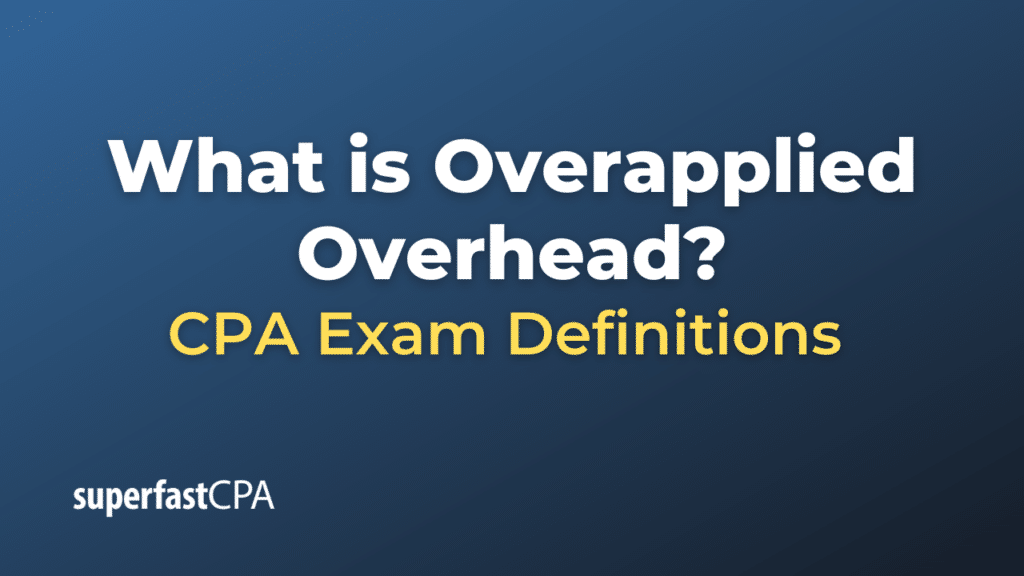Overapplied Overhead
Overapplied overhead is a concept in cost accounting. Overhead refers to indirect costs that are not directly tied to a specific activity such as manufacturing or production. These costs include utilities, rent, administrative salaries, and depreciation. These costs are typically applied to products or services using a predetermined overhead rate.
Sometimes, the actual overhead costs for a given period might be lower than what was estimated and allocated to the cost of goods or services, resulting in what is known as overapplied overhead.
Essentially, overapplied overhead means that a company has applied, or charged, less in overhead costs than it actually incurred. In financial terms, overapplied overhead results in a credit balance in the overhead account.
At the end of the accounting period, the balance (whether it’s underapplied or overapplied) is usually cleared out to zero by adjusting the cost of goods sold or other relevant accounts. This way, the effects of under- or overapplying overhead do not carry forward into future accounting periods. The exact method for dealing with underapplied or overapplied overhead can depend on the specific accounting policies and practices of the company.
To correct for overapplied overhead, the excess amount is usually subtracted from the total cost of goods sold. If the amount of overapplied overhead is significant, it may be spread out across various inventory accounts and cost of goods sold in proportion to the overhead applied during the period.
The opposite of overapplied overhead is underapplied overhead, which occurs when a company has applied more overhead to products than it has actually incurred.
Example of Overapplied Overhead
Let’s imagine a manufacturing company, XYZ Corp., that produces widgets. They estimate their overhead costs for the year to be $1,000,000. They expect to produce 500,000 widgets over the course of the year, so they calculate their predetermined overhead rate to be $2 per widget ($1,000,000 / 500,000 widgets = $2 per widget).
However, during the course of the year, production is more efficient than expected, and actual overhead costs only total $950,000.
Throughout the year, as widgets were produced, XYZ Corp. would have applied overhead to the cost of each widget at the rate of $2 per widget. If XYZ Corp. produced all 500,000 widgets as planned, this means that they applied a total of $1,000,000 in overhead costs ($2/widget * 500,000 widgets).
But since the actual overhead cost was only $950,000, this means XYZ Corp. has overapplied overhead by $50,000 ($1,000,000 applied – $950,000 actual = $50,000 overapplied).
In this case, XYZ Corp. will need to make an adjustment to its accounting records to account for the overapplied overhead. This could involve decreasing the cost of goods sold, or adjusting other inventory accounts depending on the company’s accounting policy. This will ensure the company’s financial statements accurately reflect the actual overhead costs incurred during the period.













